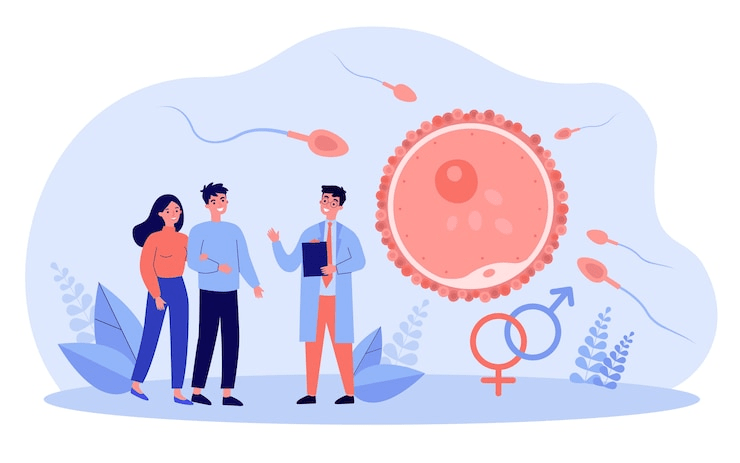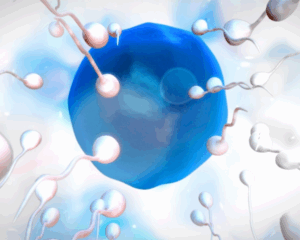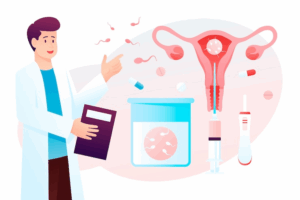
Gene therapy for azoospermia treatment
Introduction Male infertility, especially caused by azoospermia, affects

Infertility is a sensitive subject that affects millions of couples worldwide, and when it comes to male infertility, azoospermia is one of the most serious conditions. If you or someone you know has been diagnosed with azoospermia, you’re likely asking: Can azoospermia be treated? The answer is not a simple yes or no—it depends on the type, cause, and overall health of the individual. In this comprehensive guide, we’ll explore everything you need to know about azoospermia, including causes, types, symptoms, diagnosis, and most importantly—treatment options.
Azoospermia is a medical condition in which a man’s semen contains no sperm. This condition affects about 1% of the male population and approximately 10-15% of infertile men. While it can be alarming, it’s essential to understand that azoospermia is not always untreatable.
There are two main types of azoospermia:
Obstructive Azoospermia (OA) – Sperm is produced but is blocked from reaching the ejaculate due to a physical obstruction.
Non-Obstructive Azoospermia (NOA) – The testicles fail to produce sperm due to hormonal imbalance, genetic conditions, or damage to the testicular tissue.
Azoospermia often goes unnoticed until a couple tries to conceive and fails. There are usually no outward symptoms, but in some cases, men may experience:
Low libido or sexual dysfunction
Pain or swelling in the testicles
Smaller-than-average testicles
History of undescended testicles or infections
Previous surgeries in the pelvic or groin area
Because it’s often symptomless, most men discover azoospermia only during a semen analysis as part of a fertility checkup.
Understanding the root cause is critical when answering the question, Can azoospermia be treated? Causes vary depending on the type:
Congenital absence of the vas deferens (CAVD)
Infections (e.g., epididymitis, prostatitis)
Surgical injuries (vasectomy or hernia repair)
Cysts or tumors blocking the ejaculatory ducts
Genetic disorders (e.g., Klinefelter syndrome)
Hormonal imbalances (low FSH or LH levels)
Varicocele (enlarged veins in the scrotum)
Chemotherapy or radiation damage
Environmental toxins or drugs
Diagnosing azoospermia involves several steps, as doctors need to identify the type and underlying cause before recommending a treatment plan.
The first step is a semen test, typically done at least twice. If no sperm is detected in both tests, azoospermia is confirmed.
A urologist will examine the testicles and penis, and review your medical history, past surgeries, infections, and medication use.
Blood tests will measure levels of FSH, LH, testosterone, and prolactin to evaluate testicular function.
To check for chromosomal abnormalities or gene mutations, such as Y-chromosome microdeletions or CFTR mutations.
Ultrasound scans (scrotal and transrectal) help identify structural issues like blockages or varicoceles.
In some cases, a small sample of testicular tissue is removed to check if sperm production is occurring.
Here’s the big question: Can azoospermia be treated? The answer is yes, in many cases—but it depends on the specific cause.
Let’s explore treatment options for each type of azoospermia:
Since sperm production is normal in OA, the goal is to restore the flow of sperm.
Vasovasostomy: Reconnecting the vas deferens after a vasectomy
Vasoepididymostomy: Bypassing a blockage in the epididymis
Transurethral resection of the ejaculatory ducts (TURED): Treats blockages near the prostate
If surgery isn’t an option or the couple wants to pursue assisted reproduction:
PESA (Percutaneous Epididymal Sperm Aspiration)
MESA (Microsurgical Epididymal Sperm Aspiration)
TESA (Testicular Sperm Aspiration)
These retrieved sperm can be used in IVF (In Vitro Fertilization) or ICSI (Intracytoplasmic Sperm Injection).
NOA is more complex because the body isn’t making sperm naturally. However, in some cases, treatment can still lead to sperm production.
If hormone levels are abnormal, treatment may include:
Clomiphene citrate to stimulate sperm production
hCG or FSH injections to balance reproductive hormones
Aromatase inhibitors to increase testosterone levels
For men with varicocele, surgery can improve testicular function and sometimes restore sperm production.
Even in men with NOA, some areas of the testicle may still produce sperm. Micro-TESE uses a microscope to locate and extract those rare sperm for use in ICSI.
Improving sperm health through:
A healthy diet (rich in antioxidants like Vitamin C, E, and Zinc)
Regular exercise
Quitting smoking and alcohol
Reducing exposure to environmental toxins
While there’s no proven natural cure for azoospermia, certain lifestyle changes and supplements may improve overall sperm health and hormonal balance.
CoQ10
L-Carnitine
Vitamin D
Zinc
Ashwagandha
Always consult a fertility specialist before starting any supplement regimen.
Even if sperm cannot be restored naturally or surgically, assisted reproductive technologies (ART) can help azoospermic men become fathers.
If sperm is surgically retrieved, it can be injected directly into the egg in the lab using ICSI.
For men with complete testicular failure, using donor sperm may be the only option. This decision can be emotionally difficult but can still lead to a successful pregnancy.
Azoospermia can be devastating for men, affecting their self-esteem, masculinity, and mental health. It’s vital to seek:
Counseling or therapy
Support from partners, family, or friends
Joining infertility support groups
Remember, infertility doesn’t define your worth as a person or partner.
The success of azoospermia treatment depends on the cause and method chosen:
Sperm retrieval techniques: 50–70% success in obstructive azoospermia
Micro-TESE for NOA: 30–50% success depending on the center and condition
Hormonal therapy: Works well in men with specific hormone deficiencies
IVF/ICSI: 30–60% pregnancy success rates depending on the female partner’s age and fertility
In obstructive cases, surgery may offer a permanent fix. In non-obstructive cases, it often requires ongoing treatment or ART.
Some cases of azoospermia—especially those caused by blockages or hormone imbalances—can be reversed with proper treatment.
Yes, many men with azoospermia go on to become biological fathers with the help of sperm retrieval and ART.
So, can azoospermia be treated? In many cases, yes. Thanks to advances in modern medicine, fertility specialists can offer a range of solutions—from surgical repairs to assisted reproductive technologies.
While the journey may be emotional and complex, hope is far from lost. With the right diagnosis and personalized treatment plan, azoospermic men have a real chance at fulfilling their dream of fatherhood.
If you or someone you know is facing this diagnosis, don’t hesitate to consult a male infertility specialist. Every case is different, and with timely intervention, success is possible.

Introduction Male infertility, especially caused by azoospermia, affects

We are proud to have participated in the

Introduction: A New Hope in Male Infertility Treatment

Azoospermia, the complete absence of sperm in semen,
PROLISTEM® is a Patented Formula
Copyright © 2025 Prolistem®